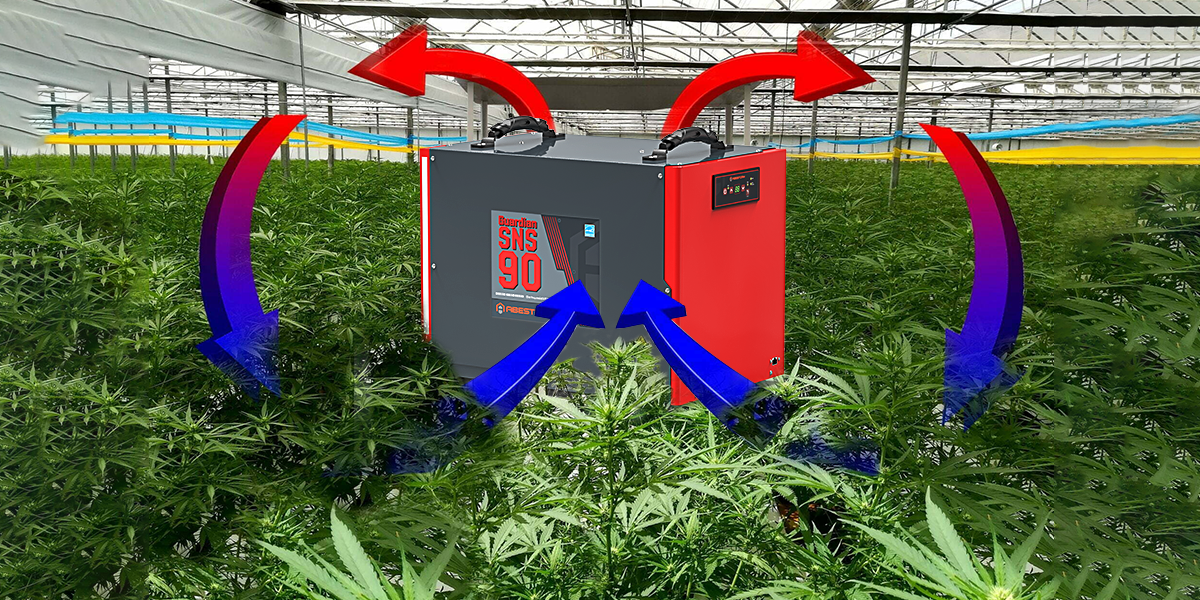Maintaining the right moisture level in your home isn't just about comfort—it's crucial for your health and your house's well-being. Too much dampness can lead to a host of problems, from mold growth to structural damage. That's where abestorm dehumidifiers come in handy. But when should you use a dehumidifier? Let's look closer at indoor humidity control and identify the key signs that it's time to bring in reinforcements.
The Importance of Indoor Humidity Control
One day, you enter your basement and get hit with a musty smell. Or maybe you've noticed your allergies acting up more than usual when you're at home. These could be signs that your indoor humidity is out of whack. High humidity levels can turn your cozy home into a breeding ground for mold, dust mites, and other allergens. Not to mention, excess moisture can wreak havoc on your home's structure, leading to warped wood, peeling paint, and even compromised foundations.
How Humidity Affects Pets
While we often think about humidity in terms of human comfort, it's crucial to consider how it impacts our furry friends. High humidity can be a real pain for pets, especially those with thick fur or respiratory issues. According to the Humane Society, dogs and cats can struggle to regulate their body temperature in damp conditions, leading to overheating and possibly death. For pets with allergies or asthma, excess moisture in the air can trigger flare-ups, much like it does in humans.
Humidity’s Effect on House Plants
While many popular indoor plants hail from tropical regions and love moisture, too much of a good thing can spell disaster. Excess humidity can lead to fungal growth on leaves, stem rot, and root problems. It can also attract pests like fungus gnats, which thrive in damp soil.
On the flip side, air that's too dry can cause leaf browning and plant stress. The key is balance. Most houseplants thrive in humidity levels between 40% and 60% - which overlaps the ideal 30 to 50% range recommended by the EPA, which deters mold growth. A dehumidifier can help you maintain this range, especially in naturally damp areas of your home.
When Should You Use a Dehumidifier?
Knowing when to deploy your dehumidifier can make all the difference in maintaining a healthy home environment. Generally, you'll want to fire up your unit during high-humidity seasons. Spring showers and summer heat often bring unwelcome moisture, making these months prime time for dehumidification.
But it's not just about the weather. Certain areas of your home are more prone to dampness than others. Basements, crawl spaces, and poorly ventilated rooms are prime candidates for dehumidification. These areas often trap moisture, creating ideal conditions for mold and mildew to thrive.
Another crucial time to use a dehumidifier is after water damage. Whether you've experienced flooding or a significant leak, a dehumidifier can help dry out affected areas and prevent further damage. It's like giving your home a chance to catch its breath after a watery ordeal.
Signs You Need a Dehumidifier
So, how can you tell if your home is crying out for humidity control? Keep an eye out for these telltale signals:
- Visible moisture on windows or water stains on walls and ceilings
- Musty odors that seem to linger no matter how much you clean
- Mold spots, especially in corners or on ceilings
- Allergies that seem to worsen when you're indoors
- Warped wood, swelling doors, or creaky floorboards
If you're nodding your head to any of these, it might be time to consider a dehumidifier. But don't just take our word for it. You can use a hygrometer to measure your home's relative humidity. If it consistently reads above 50%, you're in the danger zone.
Benefits of Using a Dehumidifier in High Humidity Areas
Adding a dehumidifier to your house has the potential to change everything. For starters, it's like kryptonite for mold spores. By reducing moisture, dehumidifiers create an inhospitable environment for these unwelcome guests. This not only protects your home but also improves your air quality. Less moisture means fewer allergens and dust mites, leading to cleaner, fresher air that's easier on your lungs.
But the benefits don't stop there. Drier air actually feels cooler, which means you might find yourself reaching for the AC remote less often. This can translate to lower energy bills—a win for both your wallet and the environment. Plus, by keeping humidity in check, you're protecting your home's structure and your belongings from water damage.
Optimal Humidity Levels and How to Achieve Them
When it comes to indoor humidity, you want it to be just right. Aim for a relative humidity below 60%. Levels in this range discourage mold growth while maintaining comfort. But how do you hit this target?
Start by using a hygrometer to monitor your home's humidity levels. If you're consistently above 50%, it's time to take action. Place your dehumidifier in a central location for maximum effectiveness, and keep it at least 6 inches from walls for optimal air circulation.
Remember, different areas of your home may have different needs. Your bathroom, for example, might benefit from running a dehumidifier after showers, especially if you don't have an exhaust fan. In the kitchen, consider using one while cooking to manage excess moisture from boiling and steaming.
The Abestorm 120 Pints Guardian SN55 Crawl Space Dehumidifier is an excellent choice for maintaining optimal humidity levels in an average 3-bedroom house. With a capacity to remove up to 55 pints per day at AHAM conditions and 120 pints at saturation, it effectively covers areas up to 1,300 square feet. Its energy-efficient design, auto-defrost system, and continuous drainage option ensure hassle-free operation, making it ideal for basements, crawl spaces, and other large rooms.
Dehumidifier Usage Tips for Maximum Efficiency
To get the most out of your dehumidifier, follow these expert tips:
Set it right: Aim for that 30-50% humidity range we talked about earlier.
Size matters: Choose a dehumidifier sized appropriately for your space. Bigger isn't always better—an oversized unit can waste energy.
Go green: Look for ENERGY STAR-certified models to save on electricity costs.
Keep it clean: Regular maintenance is key. Clean the filter and water tank regularly to maintain efficiency.
Monitor and adjust: Keep an eye on humidity levels and adjust your dehumidifier's settings as needed. Seasons change, and so should your humidity control strategy.
Controlling Your Home's Humidity for a Healthier Living Space
Understanding when to use a dehumidifier is key to maintaining a healthy, comfortable home environment. By recognizing the signs of excess humidity and implementing these tips, you can effectively control indoor moisture levels, prevent mold growth, and improve overall air quality. It's not just about comfort—it's about creating a safer, healthier space for you and your loved ones.
Ready to take control of your home's humidity? Visit Abestorm to explore our collection of top-quality residential and commercial dehumidifiers. Our expert-curated selection ensures you'll find the perfect solution for your specific needs, helping you create a healthier, more comfortable living space. Don't let excess moisture dampen your home life—take action today and breathe easier tomorrow.









Shop For Dehumidifier